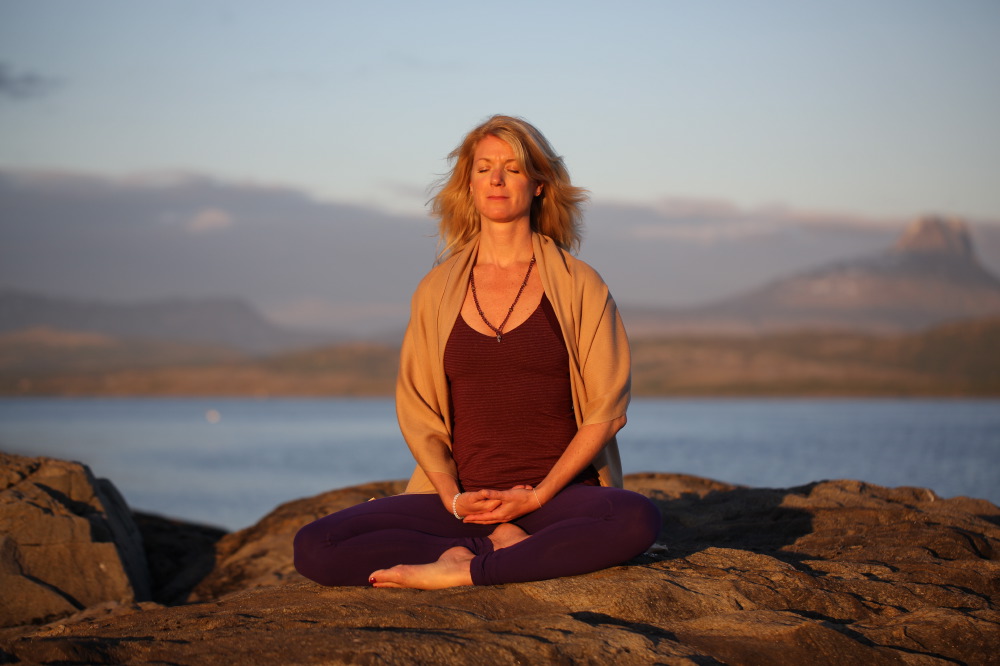
21 Feb Is stress really bad for you? – part 2
In my previous blog I described that experiencing a – real or perceived – threat triggers the fight-or-flight response in our body. This reaction makes our brain even more hyper alert to threat. It works in reverse too: negative thoughts trigger stress responses in the body.
Mindfulness meditation helps to stop that from happening. When we are more aware of our thoughts we can take a step back and realize that a stressful or negative thought doesn’t necessarily represent reality. Research has found that mindfulness meditation changes the physical structure of the brain and makes us more resistant to stress. And even, as described in my previous blog, that stress is not (necessarily) bad for you when you perceive it as something positive.
An almond shaped mass of cells in the brain, called the amygdala, is a quick response system for detecting threats. It involves no conscious thought; it simply reacts. Through repeated activation – i.e. continuous experiences of stress – the amygdala will grow and becomes more active. When we are chronically stressed, sensory input bypasses the hippocampus (which adds factual content to memories), and the prefrontal cortex (which carries out planning and rational thought), leading to an unrealistic perception of reality. In other words: when under chronic stress we literally see everything as a problem. Mentioned research shows that an 8-week Mindfulness Based Stress Reduction course – a program in which mindfulness meditation is practiced daily for 30 minutes – increases the capacity of the hippocampus and reduces the density in the amygdala, thus making us less prone to react without thinking first.
Meditation also reduces signs of physiological stress in the body, such as cortisol and markers of inflammation. There are even some small studies that hint that meditation can protect our DNA from shrinking, potentially slowing aging in our cells.
The relaxation response is the opposite of the fight-or-flight response. Whereas the fight-or-flight response is activated by our sympathetic nervous system, stimulating the parasympathetic nervous system induces the relaxation response. The parasympathetic nervous system is responsible for regulating our body’s unconscious actions, which are activities that occur when we are at rest, such as digestion, sexual arousal, growth and repair. Therefore, this is sometimes also called the “rest and digest” response. The relaxation response will allow the hart rate to slow down and blood pressure to lower. And as you may remember: the immune system works better when the body is not under stress.
The main component of the parasympathetic nervous system is the vagus nerve. This large nerve runs from the brain stem down through the neck and into the torso to various major organs. The stronger the activity of the vagus nerve, the more our heart rate slows down. The more we slow down our breathing, the more we stimulate the vagus nerve, which then tells the brain to switch off the fight-or-flight response. In other words: slowing down your breath helps to reduce stress.
Besides slowing down the breath to counteract a stress response in your body, it is equally important to be aware of how you are breathing. Breathing improperly, i.e. breathing high up in the chest, or reverse breathing (when the belly pulls back on an inhale and expands on an exhale), chronically over stimulates the sympathetic nervous system. This keeps the heart rate and blood pressure too high, creating digestive problems and causing cold and clammy hands. In other words: it triggers the fight-or-flight-response. Taking deep, slow breaths can easily become a (new) habit with practice, and will greatly enhance your well-being. The ideal ratio of in- and exhalations is 5 seconds in, 5 seconds out.
Back to meditation. Mindfulness meditation is the practice of observing the present moment exactly as it is. An essential foundation of mindfulness practice is resting the attention on a single anchor, for example the breath, without seeking any outcome other than pure observance.
I know from experience that when you are feeling stressed, sitting still and observing your breath may be the last thing you want to do. I also know from experience, however, that meditation – besides proper breathing – is the number one anti-dote to stress. Even when you don’t like it, it will still be effective. Start with a manageable period of time, so your meditation practice doesn’t feel insurmountable. Five minutes daily may be all you do in the beginning. Gradually you can build this up to 10 minutes, eventually maybe even 20 or 30 minutes daily. The effectiveness lies in the consistency of your practice, not necessarily in the length of it. After a few weeks of meditating daily, you will probably start to notice a difference in yourself. You’ll be less reactive, more productive, and better able to see things as they really are: sometimes a threat, but most often simply a challenge you can deal with.
Want to make a head start in your meditation practice? I am leading a Silent Yoga and Meditation Retreat April 6-8, 2018 in Claverack, NY. Click here for more info.